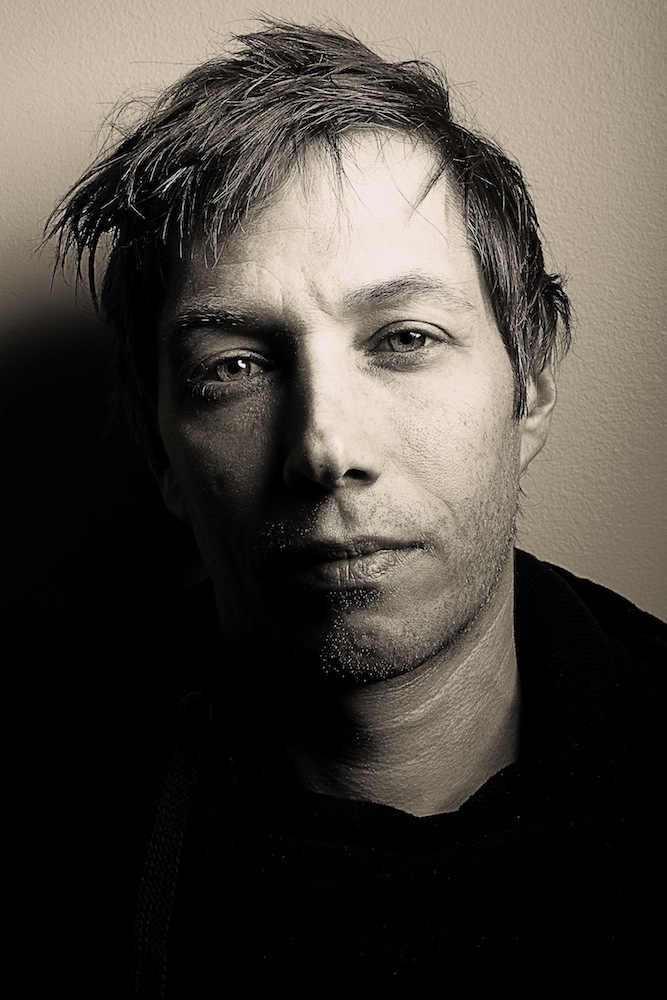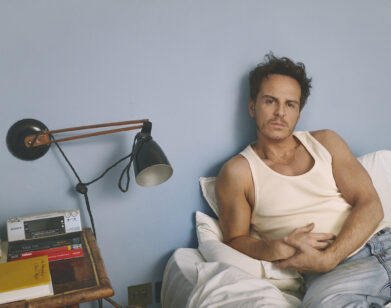Sean Baker’s Tangerine Dream
It speaks to the realism of Sean Baker’s Tangerine, which premiered at Sundance last week, that a bus driver called the cops on two of his actors when she saw them fighting (for Baker’s cameras) in her rear-view mirror. The cameras in question were all iPhones, so it’s easy to understand why she might not have understood that a real movie, backed by real producers (the Duplass brothers) was being filmed at the back of her bus.
Setbacks like these, though, came hand-in-hand with rewards. The film, which centers around two trans sex workers in West Hollywood who set out to track down a cheating boyfriend on Christmas Eve, is gloriously shaky, urgent, and improvised. The soundtrack cuts erratically from trap music to silence to classical to dubstep to jazz; the color is hyper-saturated; and the camera trails Sin-Dee (Kitana Kiki Rodriguez) and Alexandra (Mya Taylor) around the city with a fallibility that makes their performances even more affecting. Unrestrained, Baker moves freely through the mania, trauma, dry humor, and sincere tenderness of their night.
We met Baker and Taylor, who collaborated heavily from pre- to post-production, at a lounge on Main Street in Park City last Sunday, two days before their film was picked up by Magnolia Pictures for release later this year.
ZACK ETHEART: What did your research process look like?
SEAN BAKER: I think the first thing when Chris [Bergoch, Baker’s co-writer] and I decided that we were going to attempt to make this film and to write this script, we literally went to Donut Time, which is on the corner of Santa Monica and Highland, and we just started walking around that area and introducing ourselves, getting to know people. There were a few women who were talking with us, but for the most part, we didn’t get anybody embracing us for the first week or two or something like that. But eventually we went over to the LGBTQ center on McCadden. It must have been midsummer, so it was a nice summer day, and they have a courtyard there. I remember seeing a group of friends, and Mya was there, and I told Chris, “Let’s go, let’s go approach them.” [to Mya] I think you were with maybe four friends, so we were a little apprehensive at first about approaching, but within a couple of minutes I saw that Mya was very interested in our project and really enthused by it. And that was exactly what we were looking for—somebody who was enthusiastic and who would want to collaborate. We traded information and I called her and we started setting up meeting times where we would meet at the local fast food joint and talk for a while.
MYA TAYLOR: [laughs] That was fun.
BAKER: Yeah. And we recorded it all, we would record our interviews. It was very casual, it was just about hearing stories. And at first, it was Alfred Lopez—
TAYLOR: Who is my best friend in the whole entire world. I love him.
BAKER: —yeah, he’s in the film in the color-wall sequence. So he was telling us his stories as well. Then, I think two or three meetings in, Mya said, “I wanna introduce you to somebody,” and she brought Kitana Kiki to the meeting, and she was a firecracker, and she had a lot to say about the world as well. But what I saw was that there were these two very drastically different personalities, but they were two personalities that clicked together. I was like, “This is an on-screen duo.” I saw it right in front of me, at the local Jack-in-the-Box. So then we started. Right from there, I said to them, “I have this idea of two people coming together one day at Donut Time and around this area. And that’s all I have. It’s really nothing, it’s in its infancy. It’s this idea of maybe a love story, maybe it’s a revenge story—we don’t know yet, but it’s about two people coming together.”
It took a few weeks for that to sink in and and for people to think about it. And then one day Kiki came back to me and said, “Well, there is this one story that I can tell you,” and she basically told me what became the plotline of the movie: this woman scorned and this confrontation. Immediately, I was just like, “That’s drama. That is drama” [laughs] That puts our characters on a journey, and it’ll allow time for us to get to know them, [to Mya] and then we could work in all the other stories that you were telling me, for example, the way the cops would react and all these other little anecdotes and vignettes. We worked them into that basic structure, the “woman scorned” structure. But early on, she had told me that a few women were actually getting cups of urine thrown on them by passersby, and I knew that would have to be worked into the film because I just could not stop thinking about it at night. I was almost losing sleep over it.
ETHEART: Why were you so enthusiastic about the project, Mya?
TAYLOR: Because I’m an entertainer. He was very business-like, so I immediately trusted the idea and I wanted to know more. I told him everything I knew about what goes on out there and gave him all of my information, and we immediately clicked. I saw the opportunity to make something. I didn’t even care how big it would be or how small it would be or whatever the case may be, I just wanted to be a part of it. And now I’m so glad that I am a part of it.
BAKER: [laughs] I’m glad you are as well. I remember, though, at one point, I wanted to prove to them that I was legit, so I gave them copies of my films. I was like, “I’ve made other movies, I swear!” It was really nice to see that Mya liked Starlet a lot and then Kiki liked Prince of Broadway a lot. It was kind of cool to see that I was working with two different tastes as well, because I knew that it would bring different things to the table.
TAYLOR: Yes, because we’re two opposite characters. And in real life we’re opposite, too. Very much so.
ETHEART: The script is written is this vernacular that’s so specific to Sin-Dee and Alexandra’s world. How did you learn it well enough to writing convincingly in it? What was the feedback process like between the two of you?
BAKER: Well, what it was was that we would give them some lines, and then say, “If this isn’t good, you throw it out the window, and you put it into the right language.”
TAYLOR: Yeah. He gave us a treatment to begin with, and I was just like, “Okay. I wouldn’t say this, and none of these girls out here on these streets would say this.” Because it was all proper and sweet and everything, just like him. [laughs] So we changed it to the block, and how they talk.
BAKER: And there were a few lines that we’d heard over the course of the months that we were like, “You gotta use that.” For example, the first thing I heard out of Mya’s mouth was something like—
TAYLOR: “What’s your tea?” [laughs]
BAKER: [laughs] Right, “What’s your tea?” And that was like, okay, that is such a classic phrase that’s used by every girl in the area. We knew we were gonna use it.
TAYLOR: Meaning, “What’s going on with you? What’s your deal?”
ETHEART: How did you come to the decision to film everything on iPhones?
BAKER: Right. It initially began as a budgetary thing. We knew we couldn’t shoot on the high-end cameras. We just didn’t have enough money, and this is my fifth feature, and I wasn’t about to pull any more favors. So we knew that we were stuck with somewhat lower-end cameras or DSLRs, and I thought, if we’re in this realm, let’s make this film look totally original and do something different that nobody else has done. I started doing my studying and researching online, and I found out that there are actually some Vimeo channels of people who’ve done experimenting with the iPhone, and that was where I found out about this app called Filmic Pro, but also these adapters that Moondog made. They had a crowd-funding campaign at the time; they hadn’t even released these at the time. So I called them and I told them about the project and they released their prototypes to us, and they were generous enough to give us three of their prototypes. That’s really what elevated the look to a whole other level, because, you know, without it it would’ve looked… like iPhone footage. [laughs] And then I also treated it heavily in post by giving it grain and pumping up the saturation. At first, though, going into the movie, a lot of these social-realist films drain the color. For some reason they think that draining the color makes it look more real. But we decided to go the other way.
ETHEART: It looks hyperreal.
BAKER: Hyperreal, yeah. We decided that since we’re going with a hyperreal style anyway, and it’s cutting and these women are so colorful in their lives, let’s boost the color and go the opposite way. I’m happy I did, because then tangerine actually did become the dominant color of the film. There’s so much orange. Sometimes it was really serendipity; we would be on the corner and then a huge, orange car would drive by, and we would be like, “Oh, cool, I guess that made it in the shot.” Or someone would be drinking orange soda. All these little things just started working their way in.
TAYLOR: Even my lipstick was orange.
ETHEART: Why did you decide to set the story on Christmas Eve?
BAKER: That’s actually something that’s more my co-writer’s thing. The reason I love working with Chris is because he brings a very mainstream, Hollywood, almost Disney sensibility to the scripts, and I’m coming from the arthouse, foreign, indie world, so the two of us meet in the middle and he brings things these concepts that are just very mainstream in their thinking, like, “Let’s set this on what supposed to be the most joyous night of the year when we end up making it the least joyous night of the year.”
TAYLOR: You know, I loved it. There are a lot of transgender people who suffer without their families for whatever reason. And I feel like the movie really shows that. ‘Cause neither one of those girls in the movie had families, they just each other, and at the end, they still just had each other, regardless of who’s cheating, or who’s fucking who.
BAKER: That’s true as well. That’s a very good point.
For more from the Sundance Film Festival 2015, click here.







